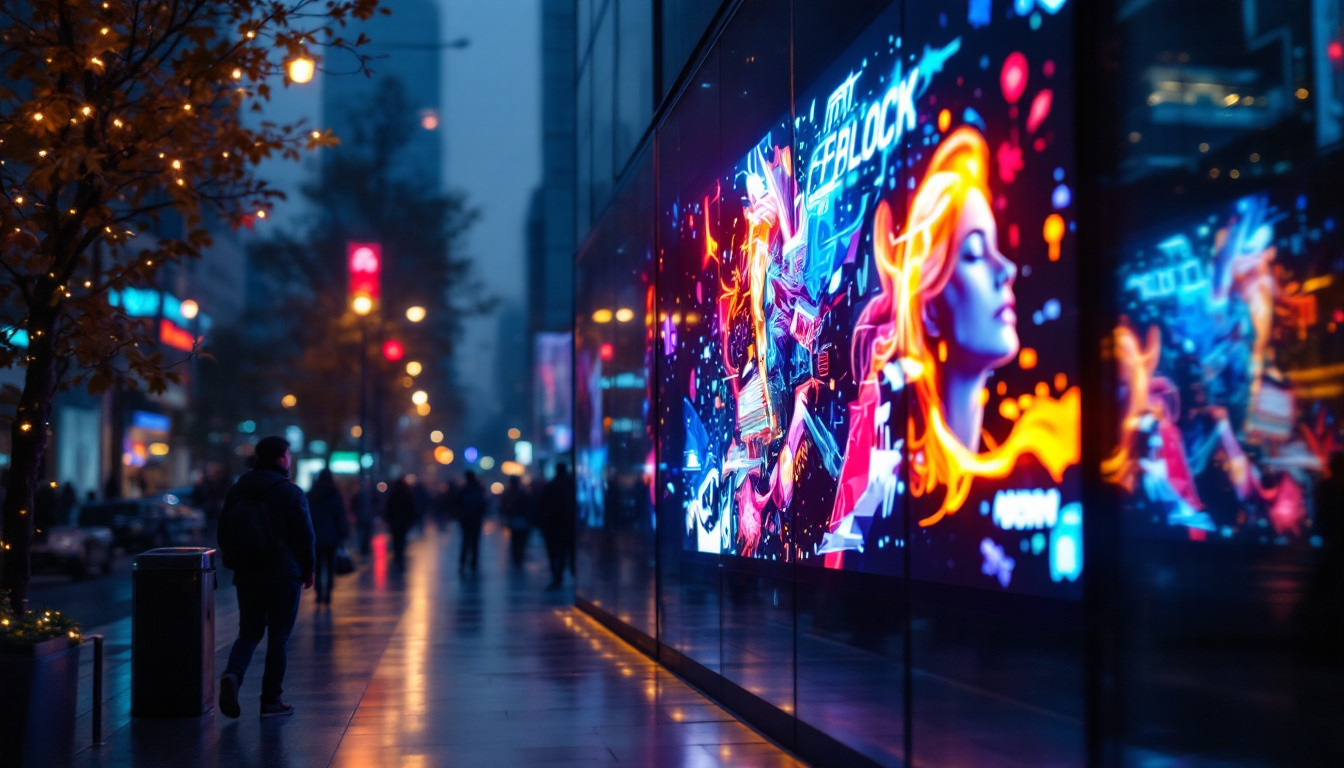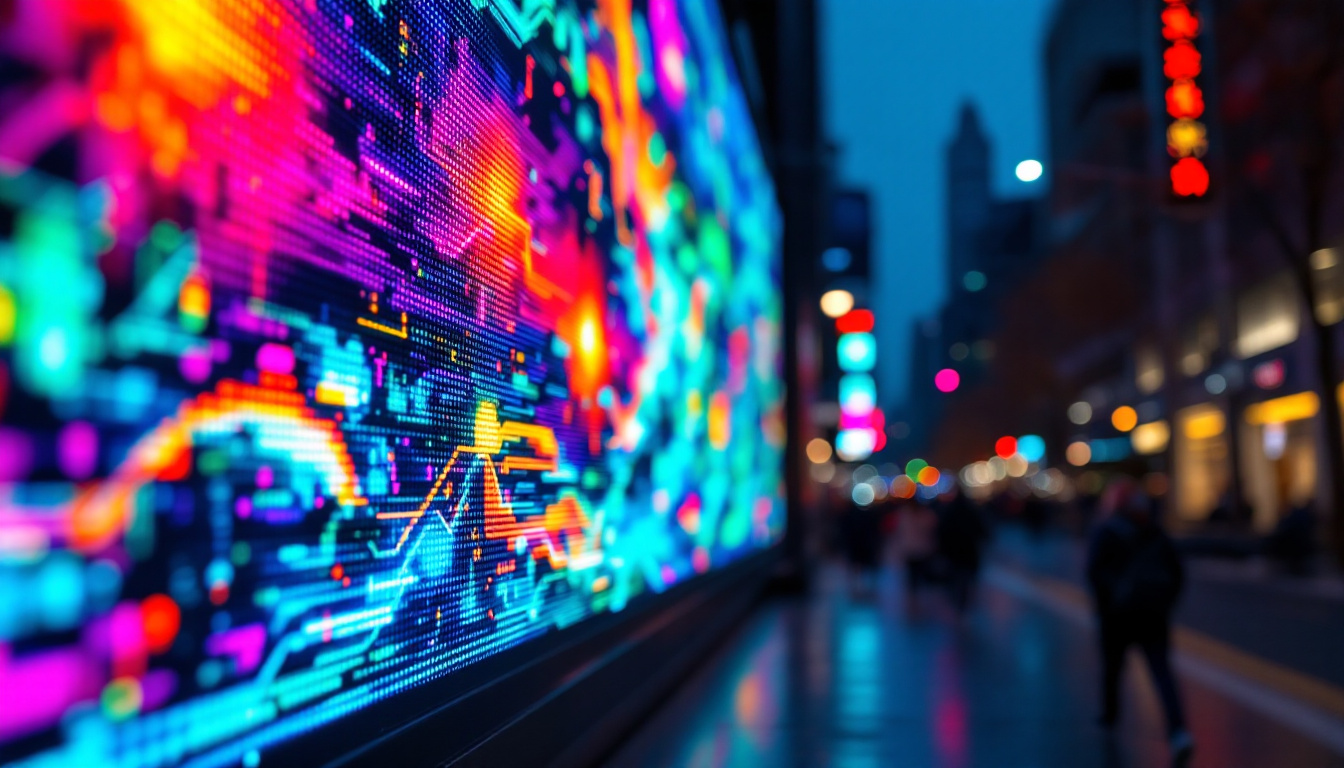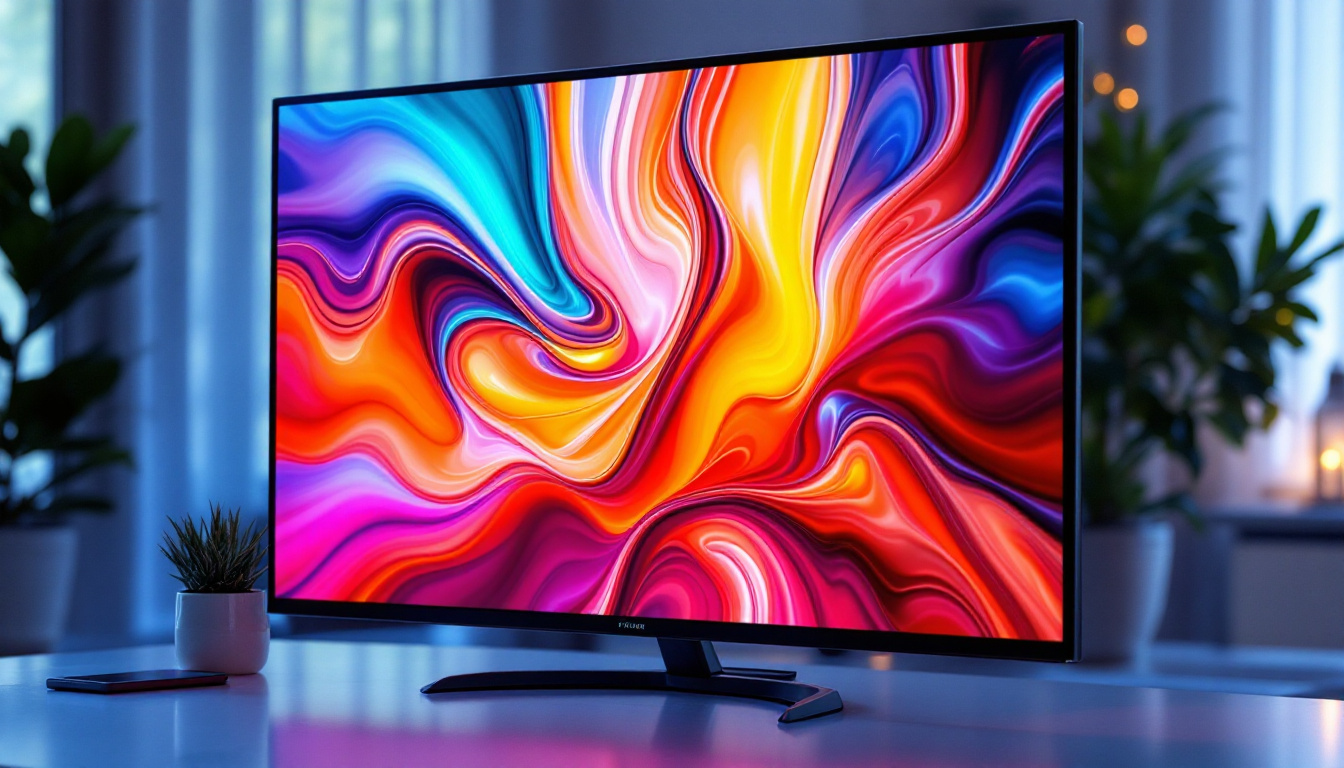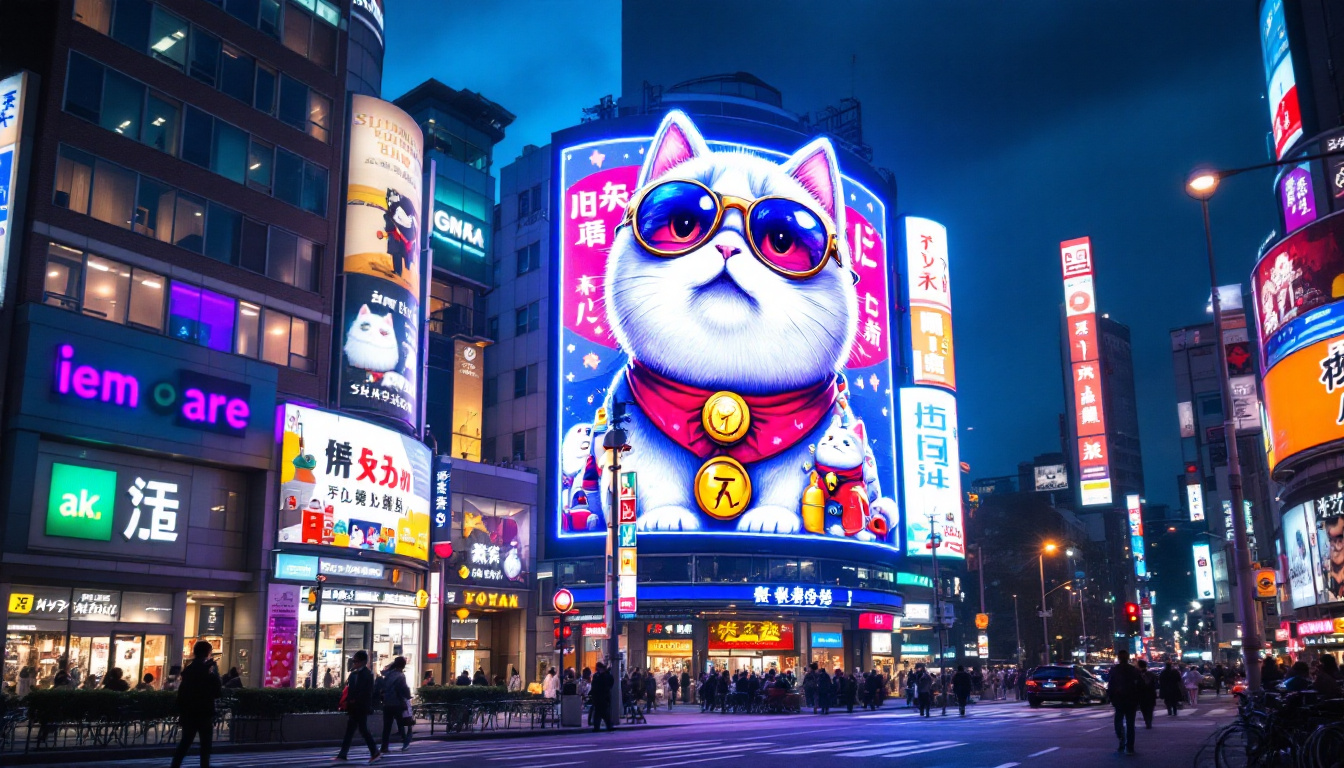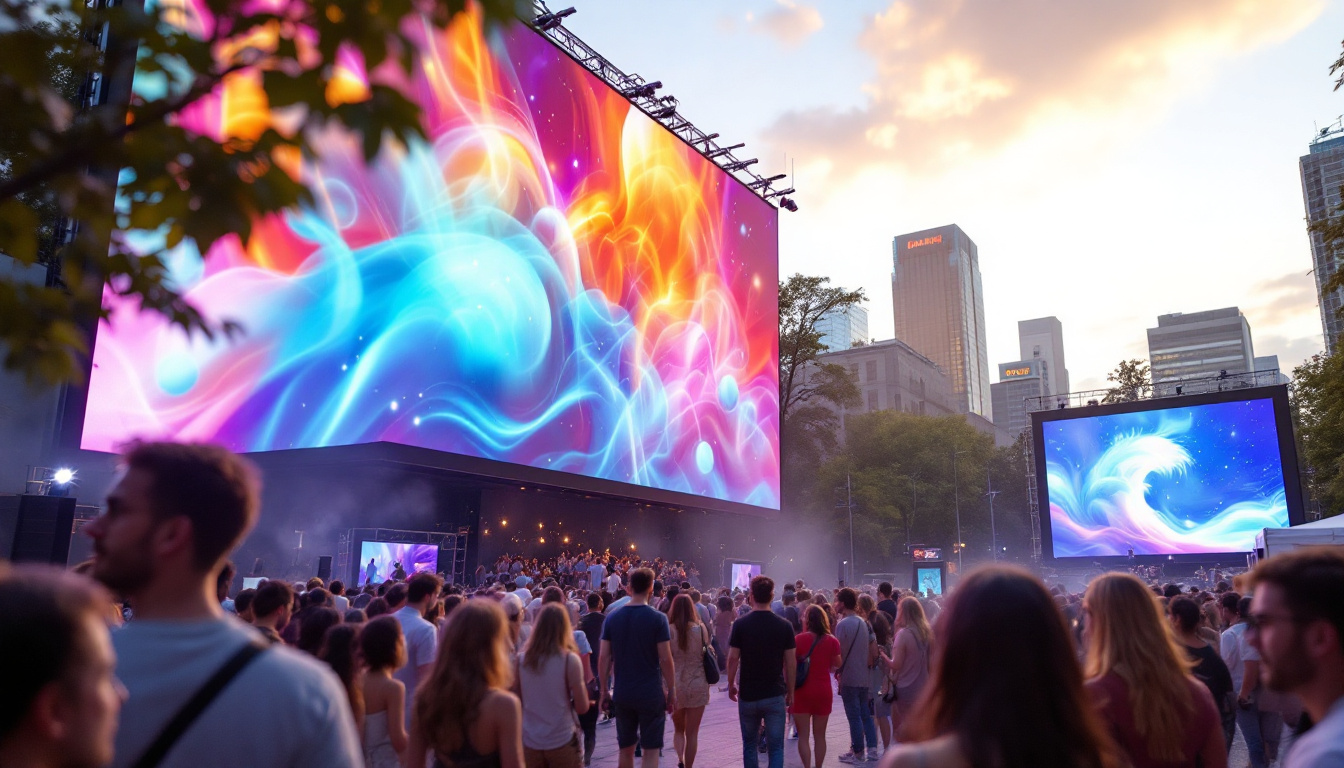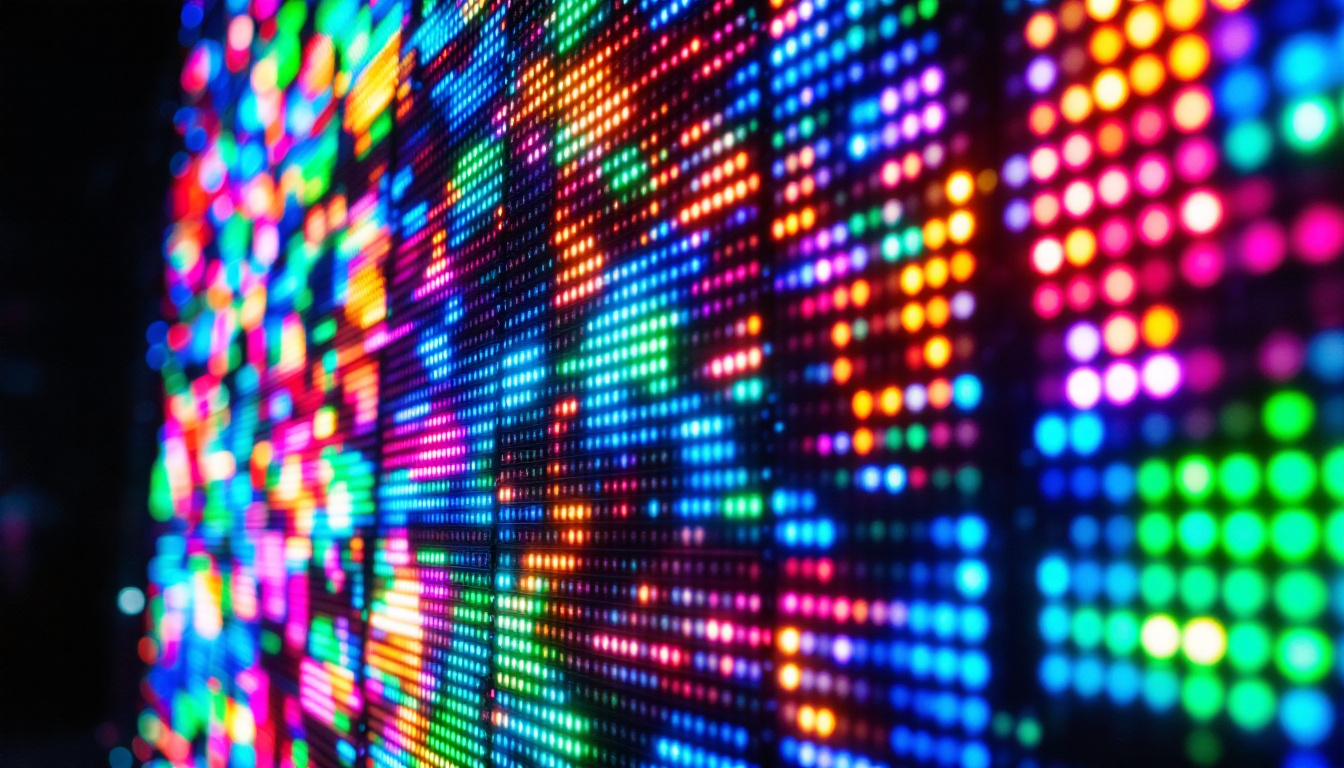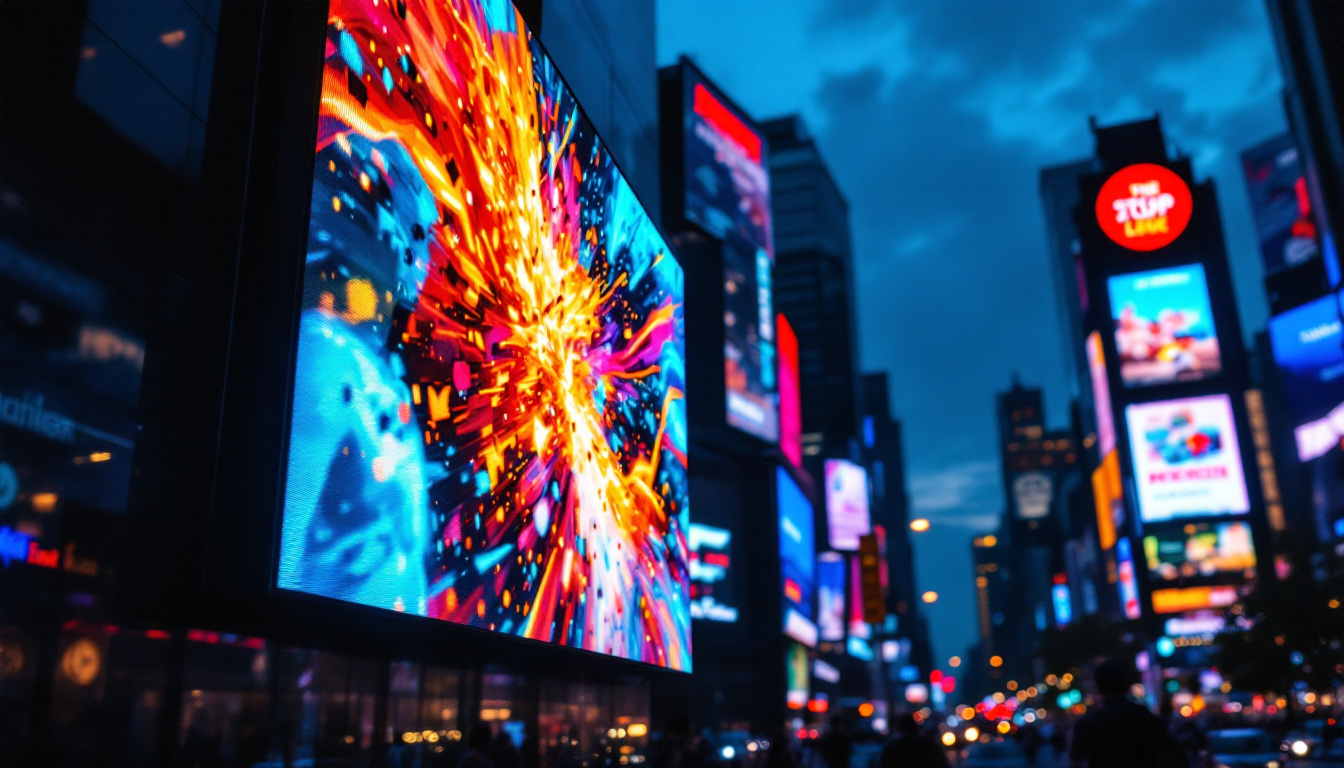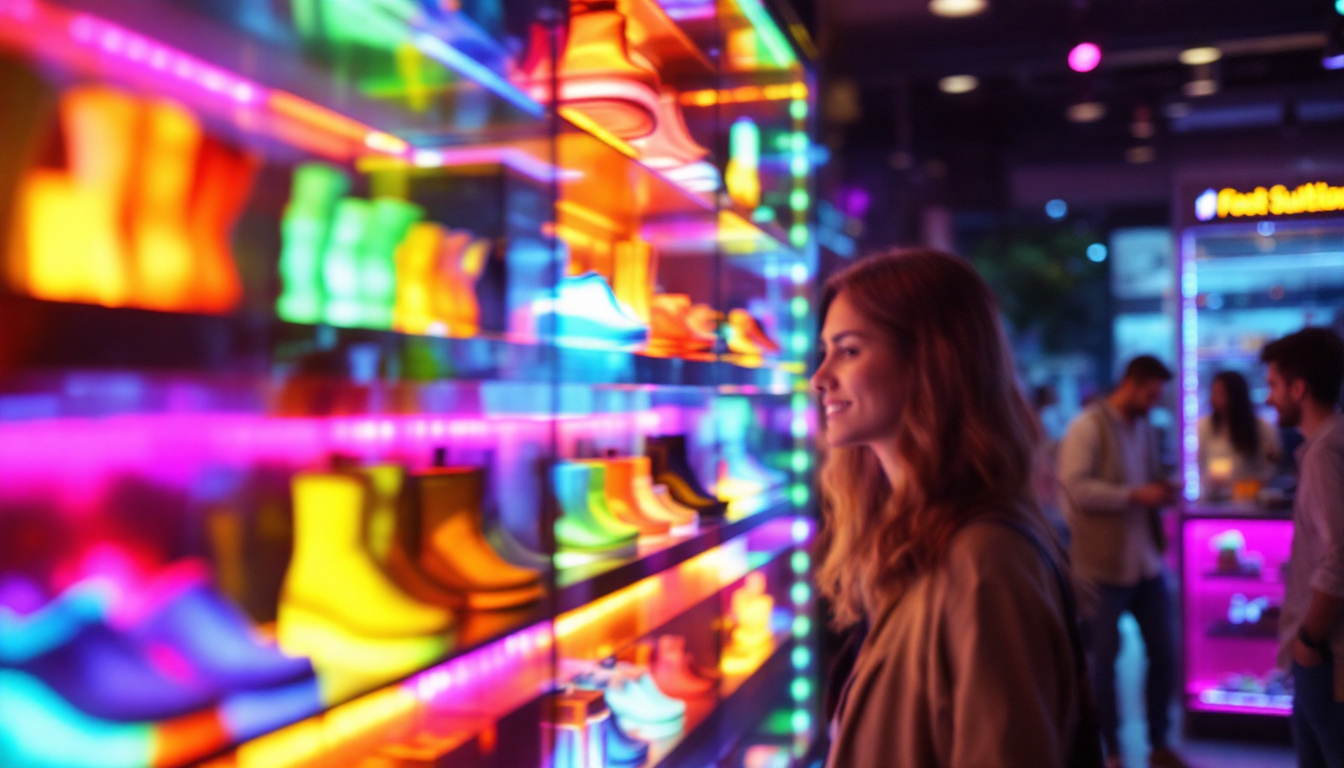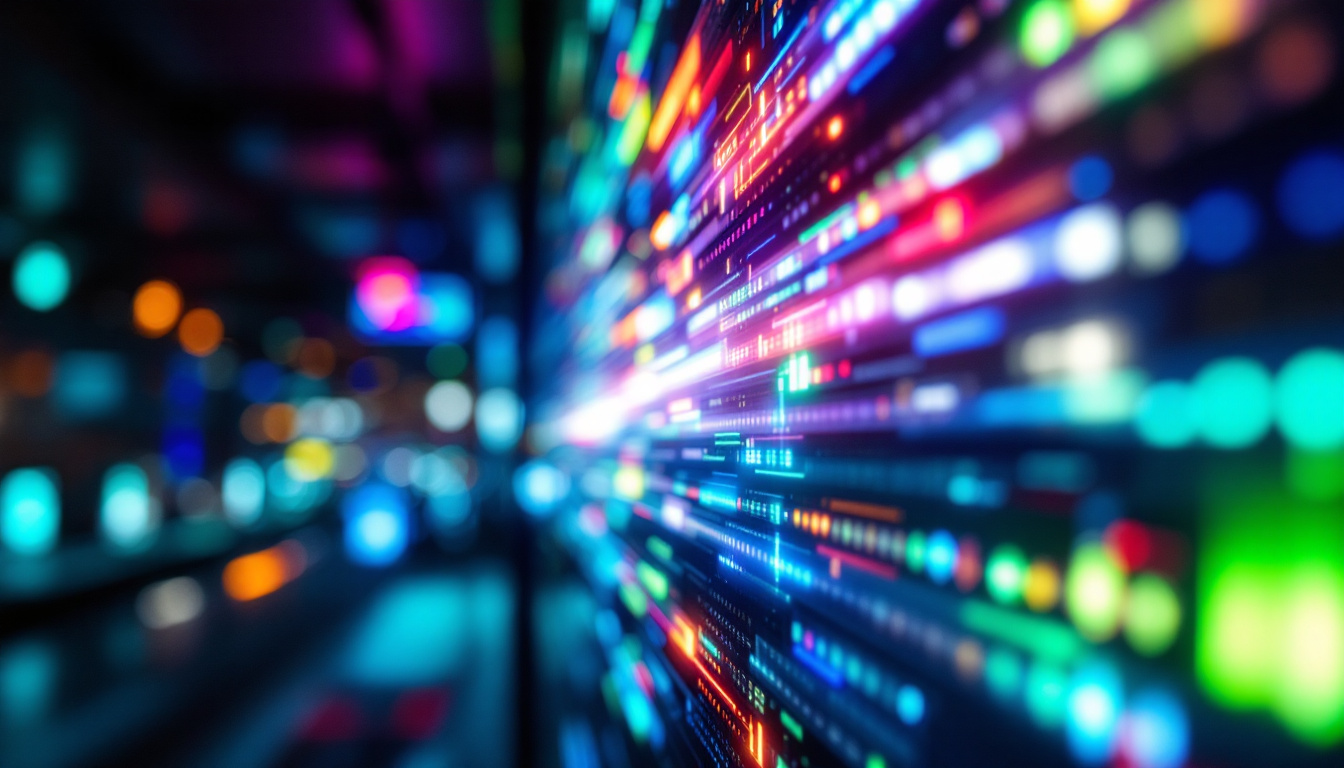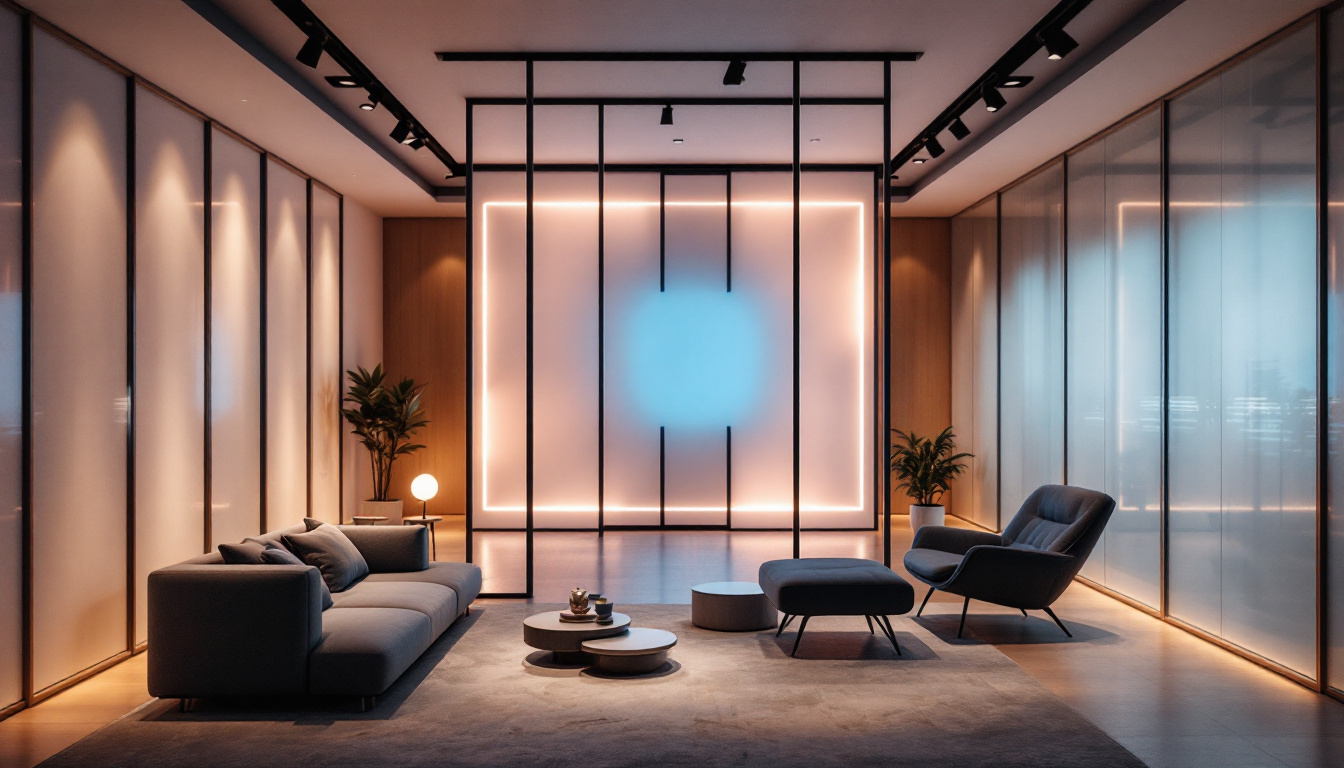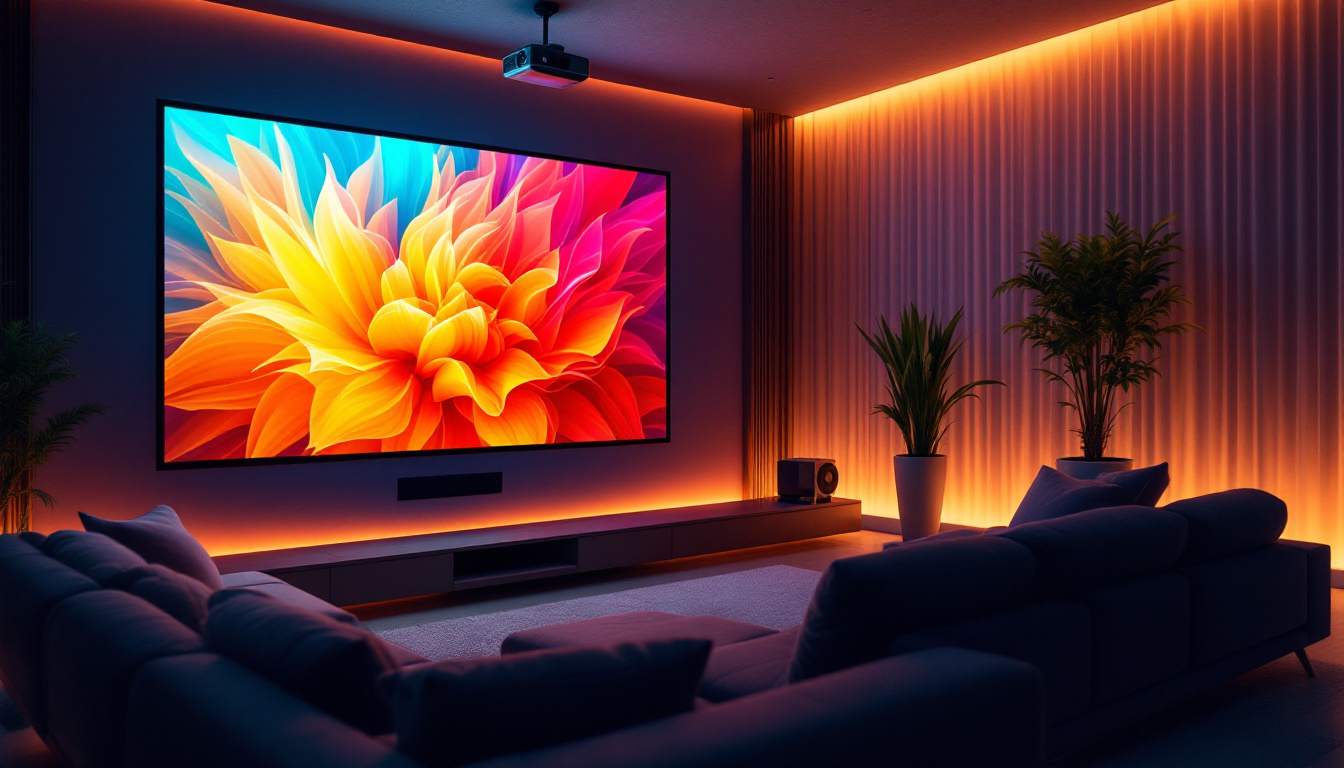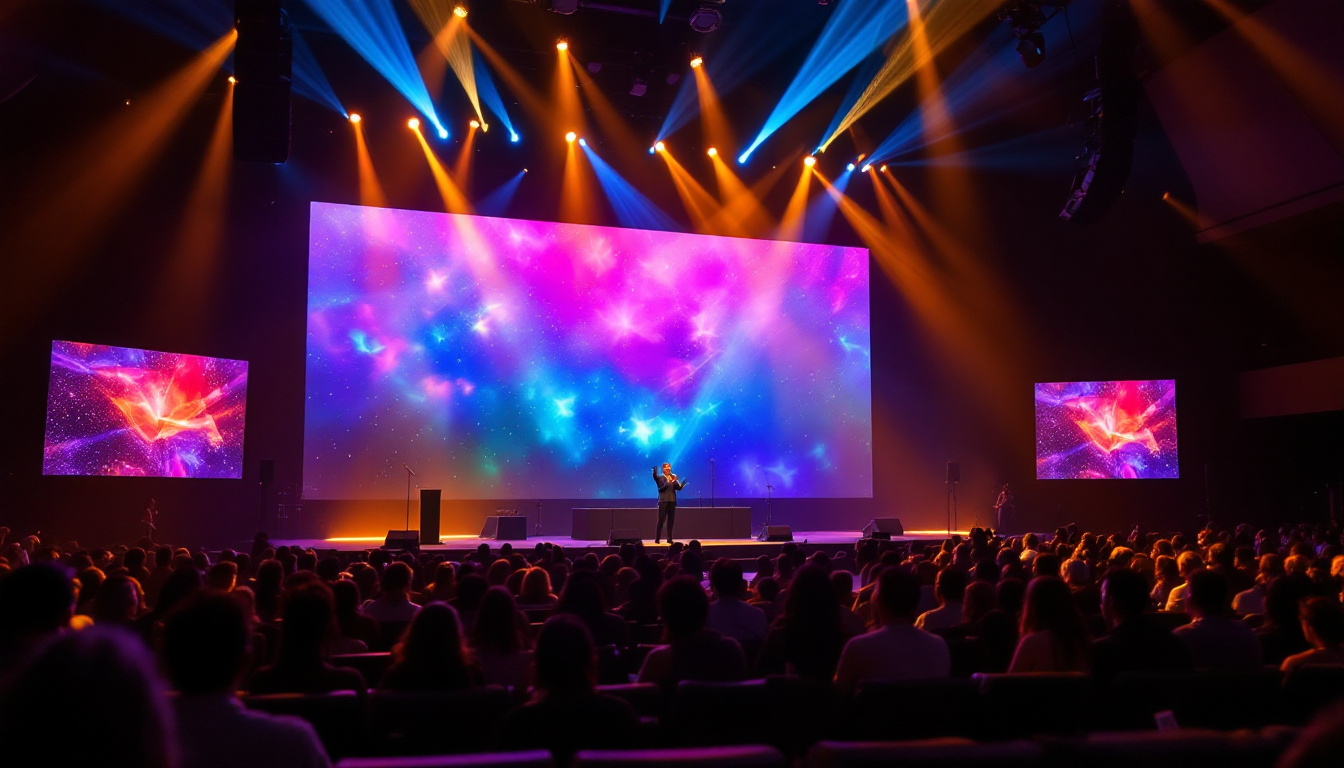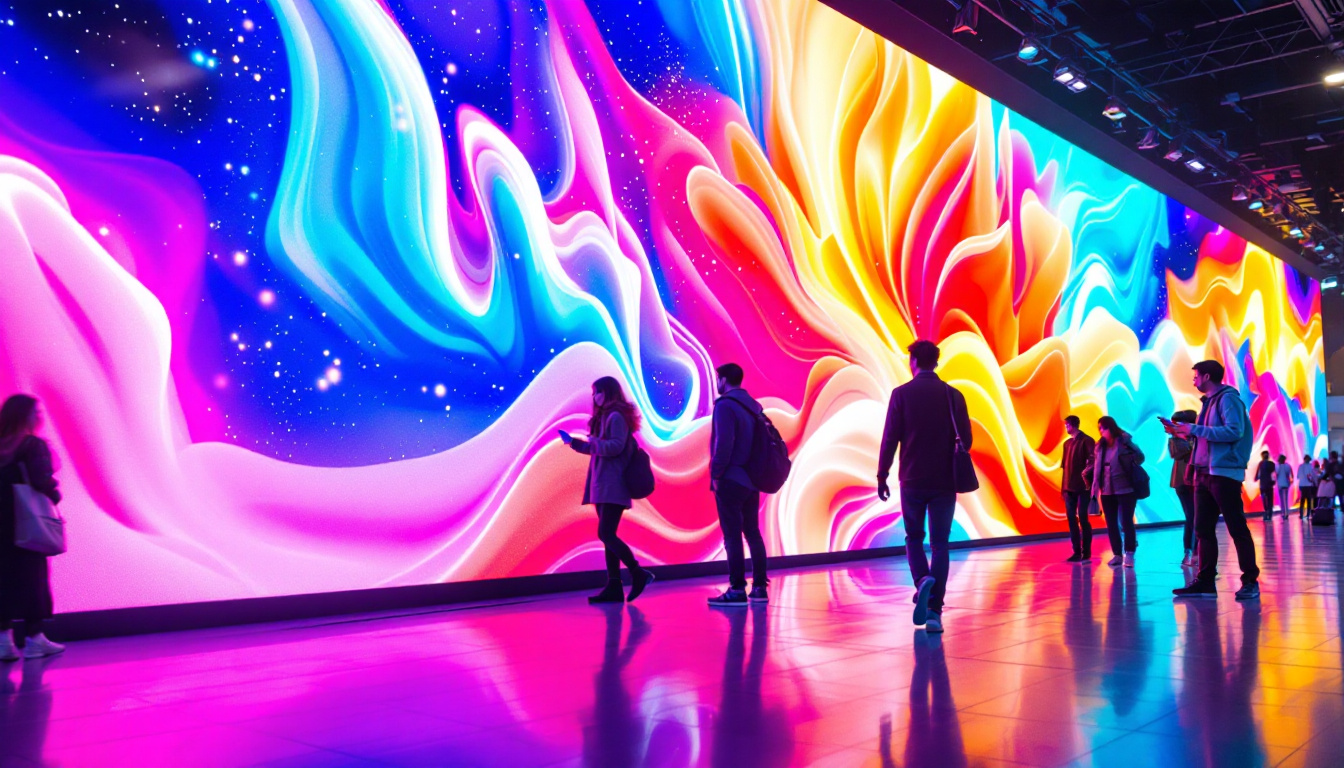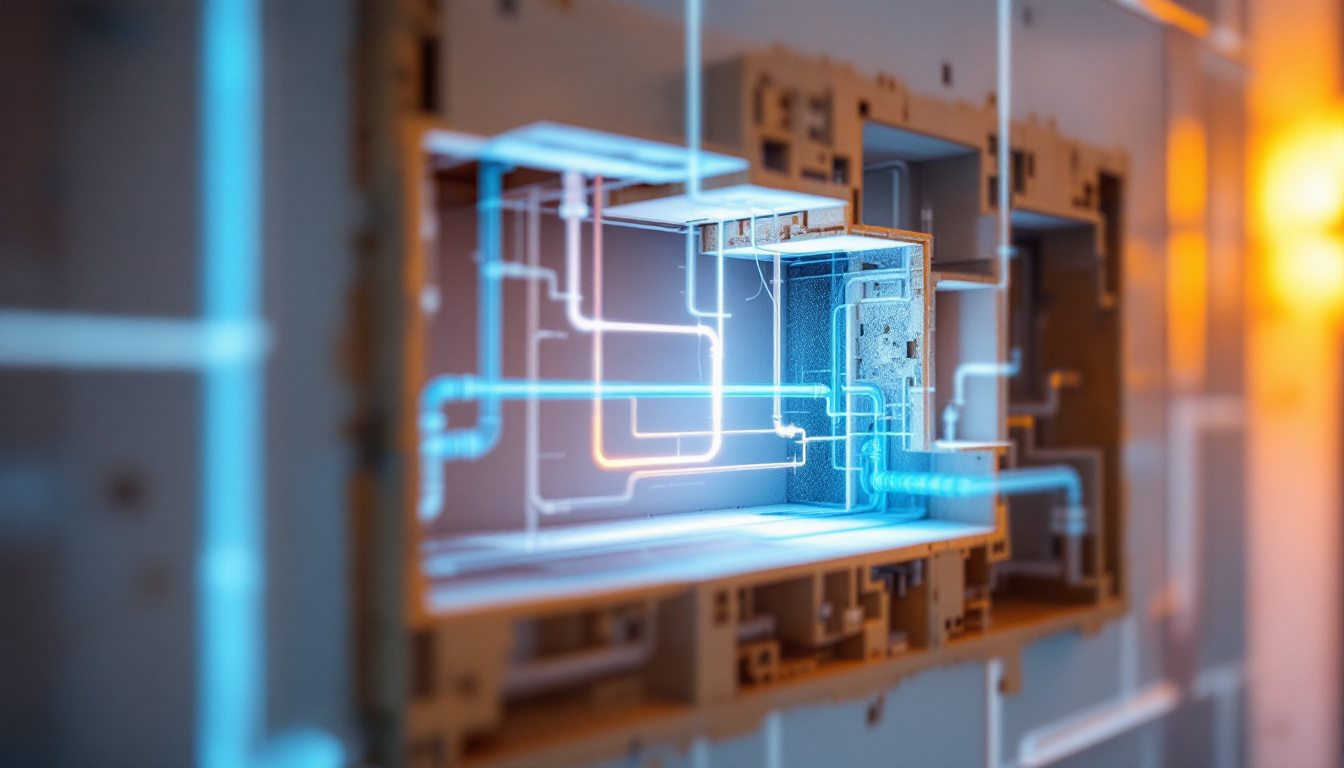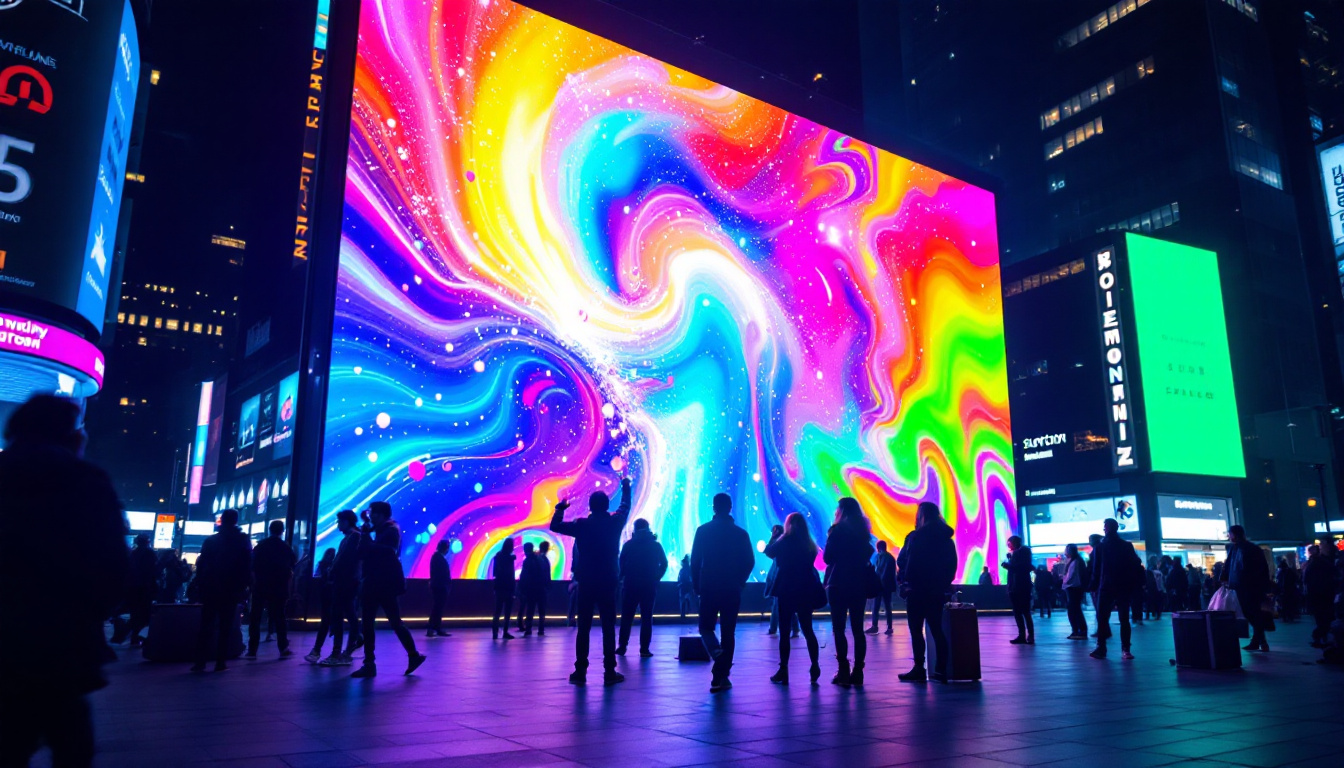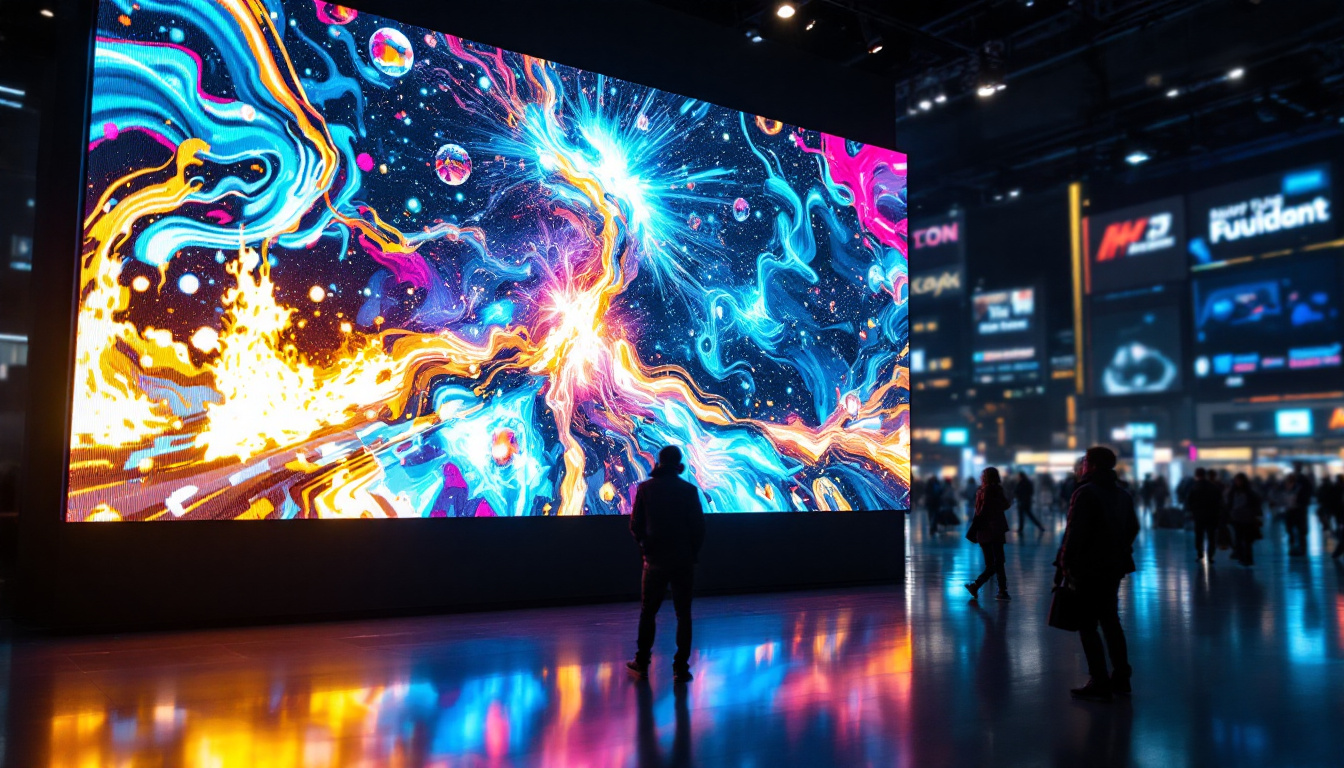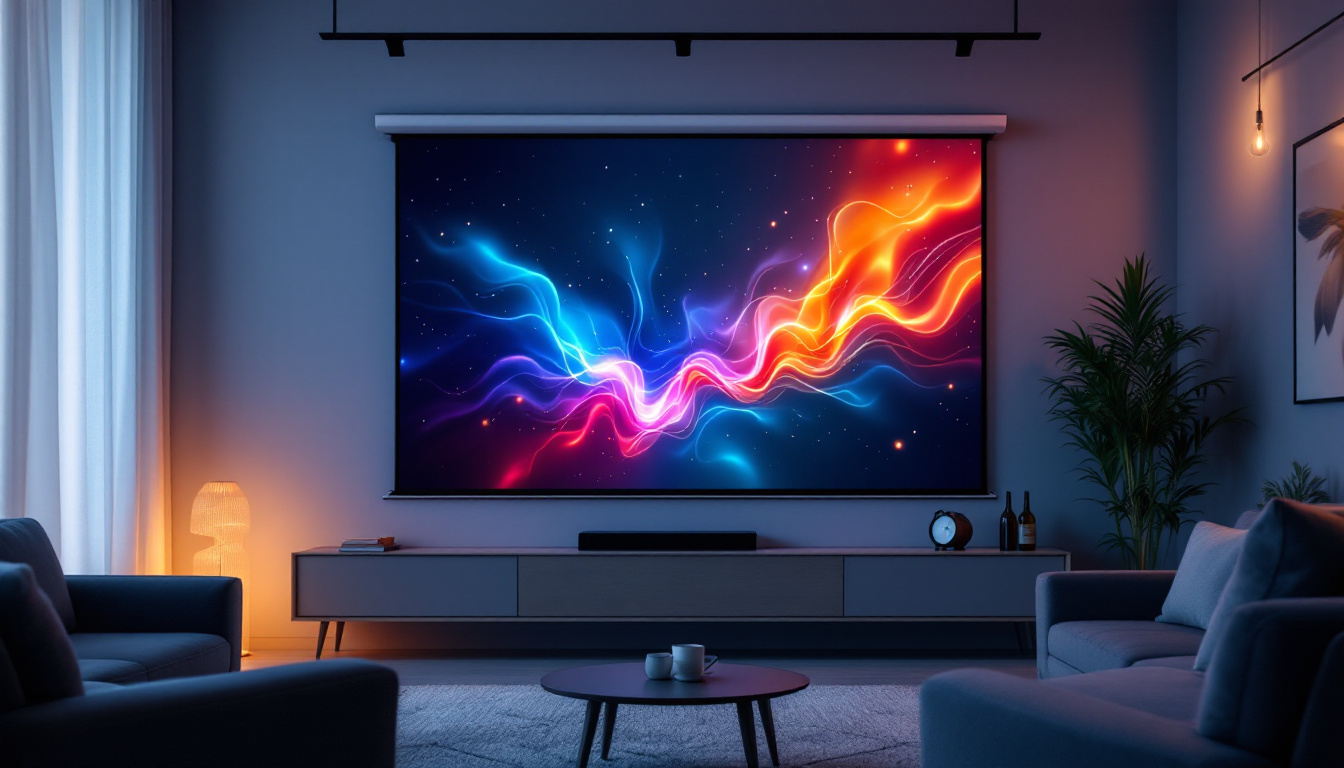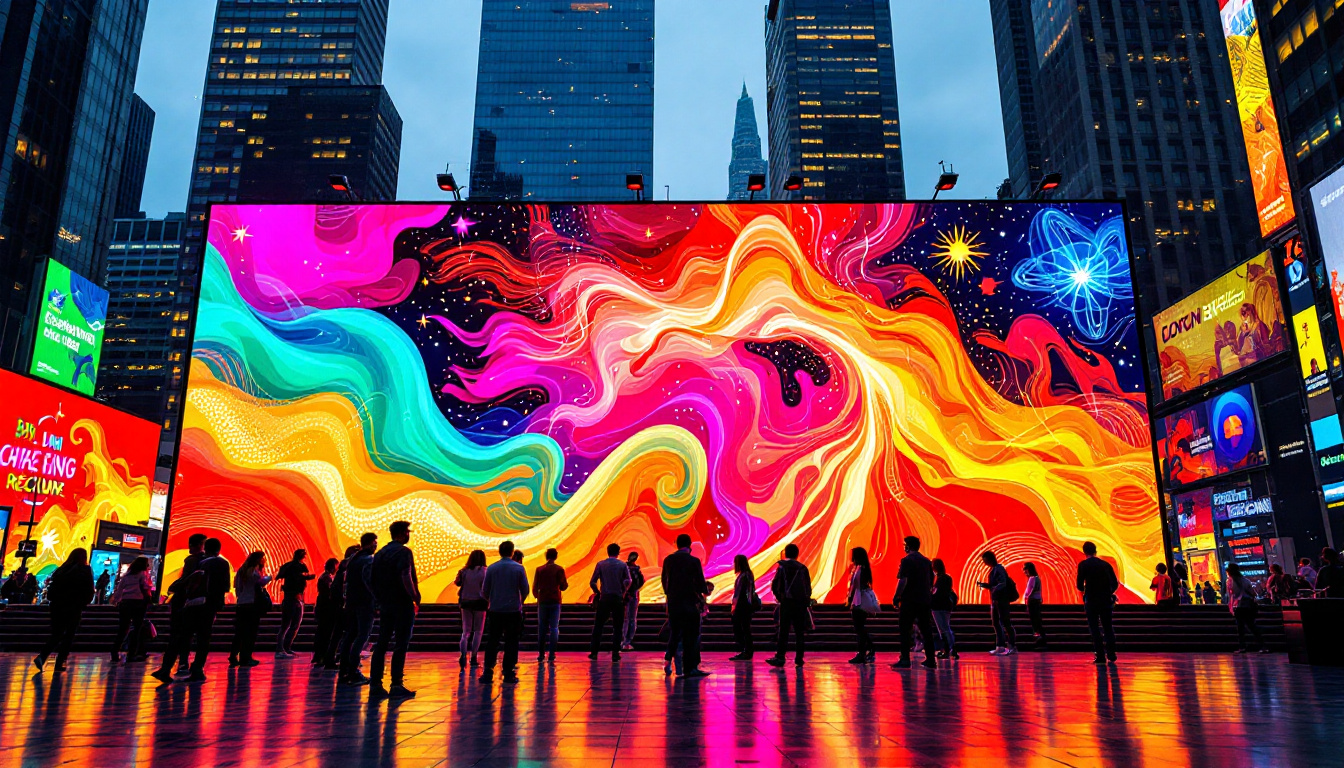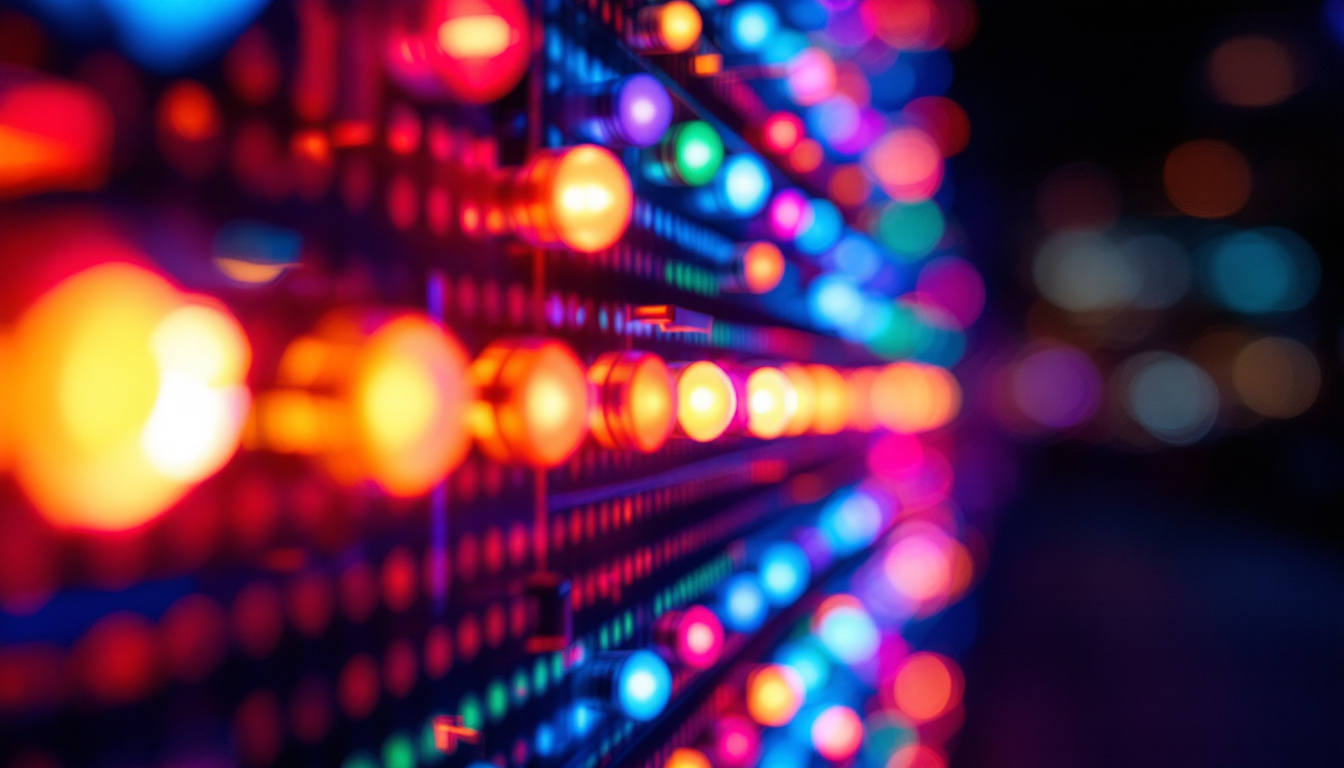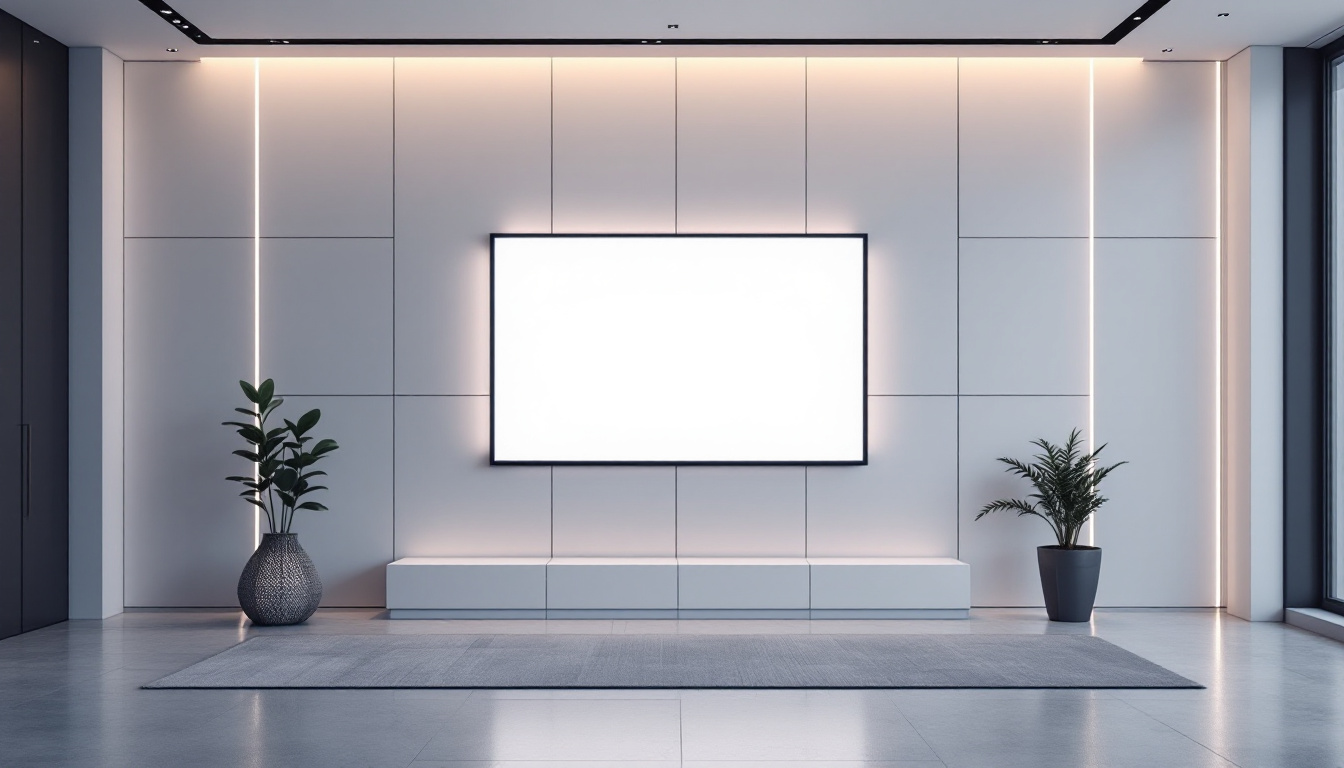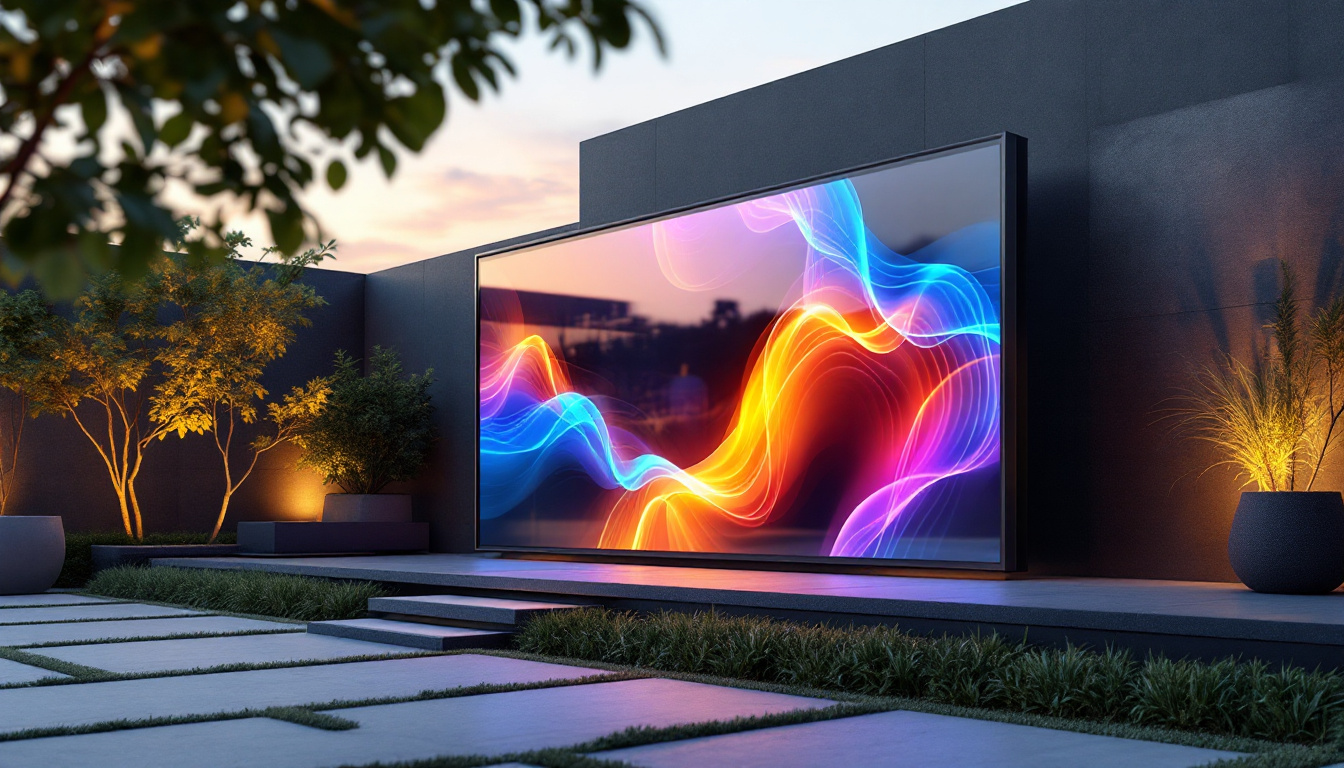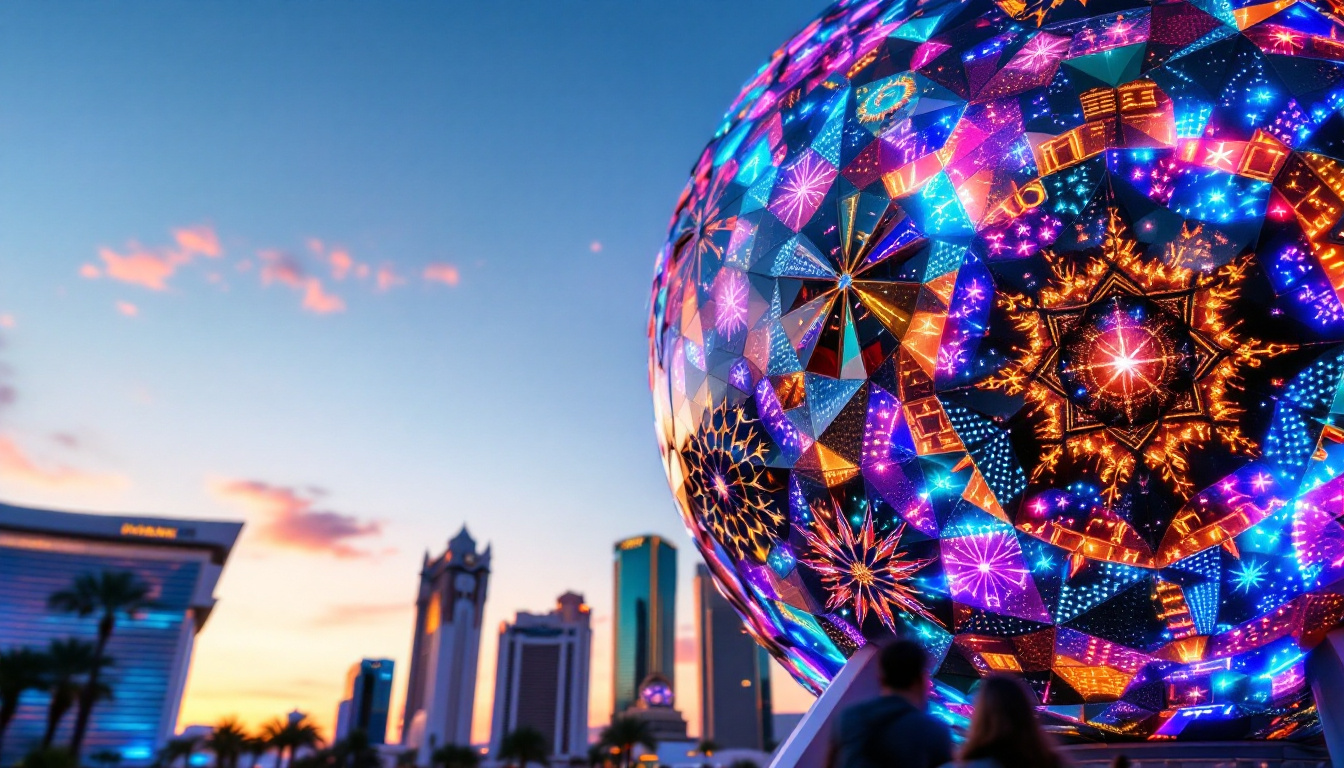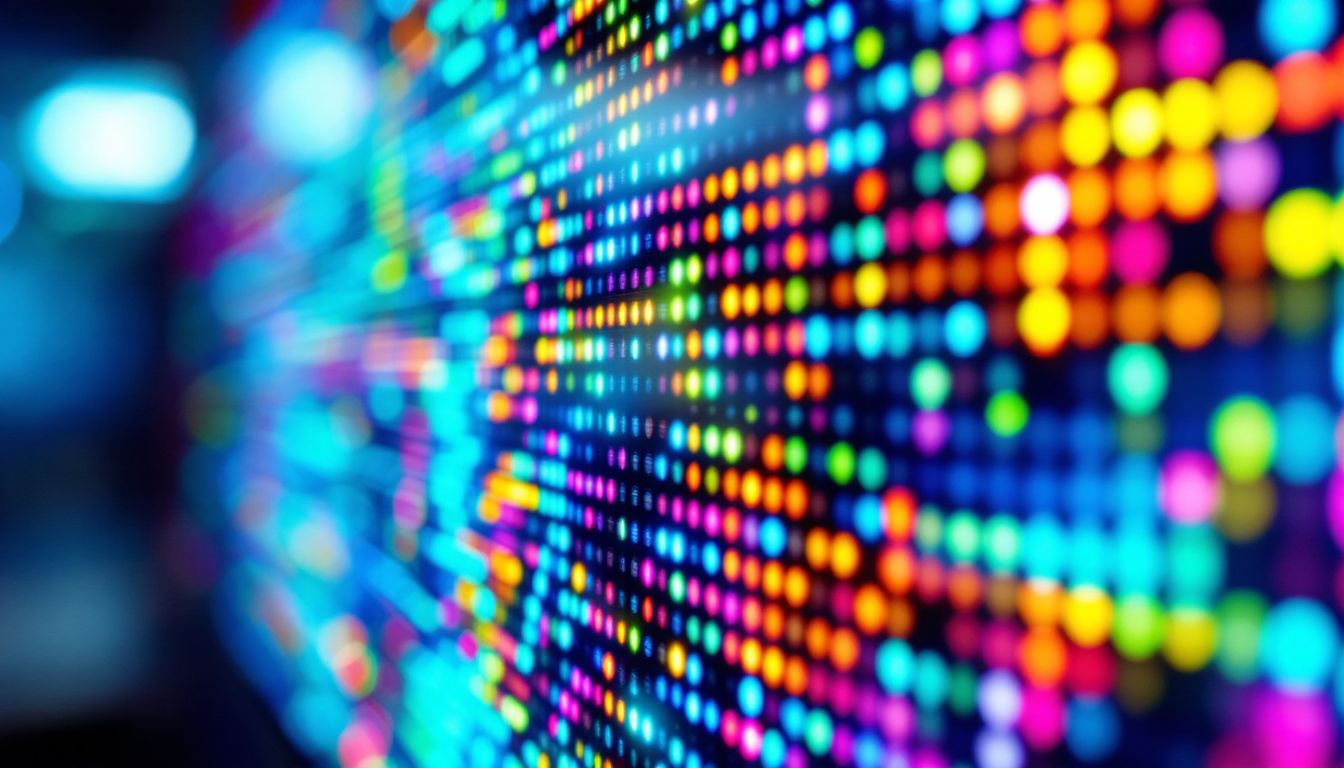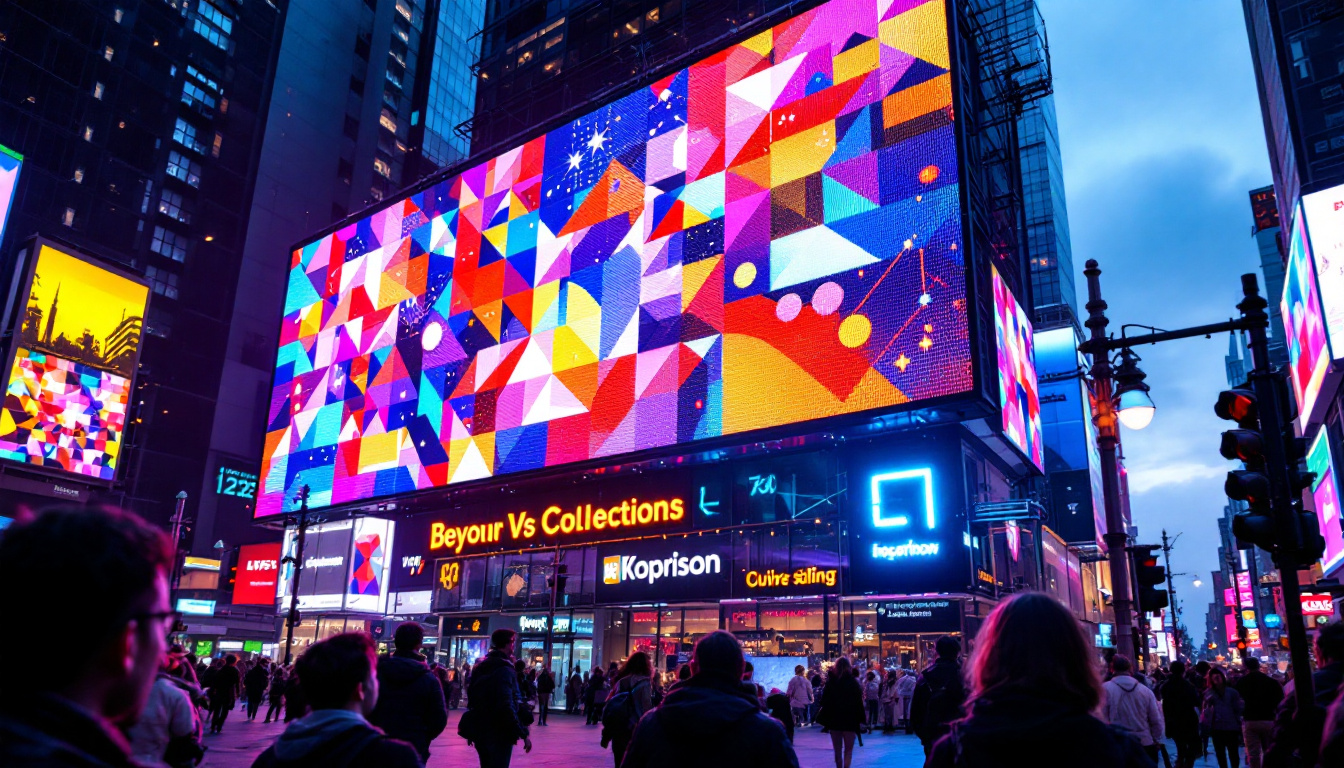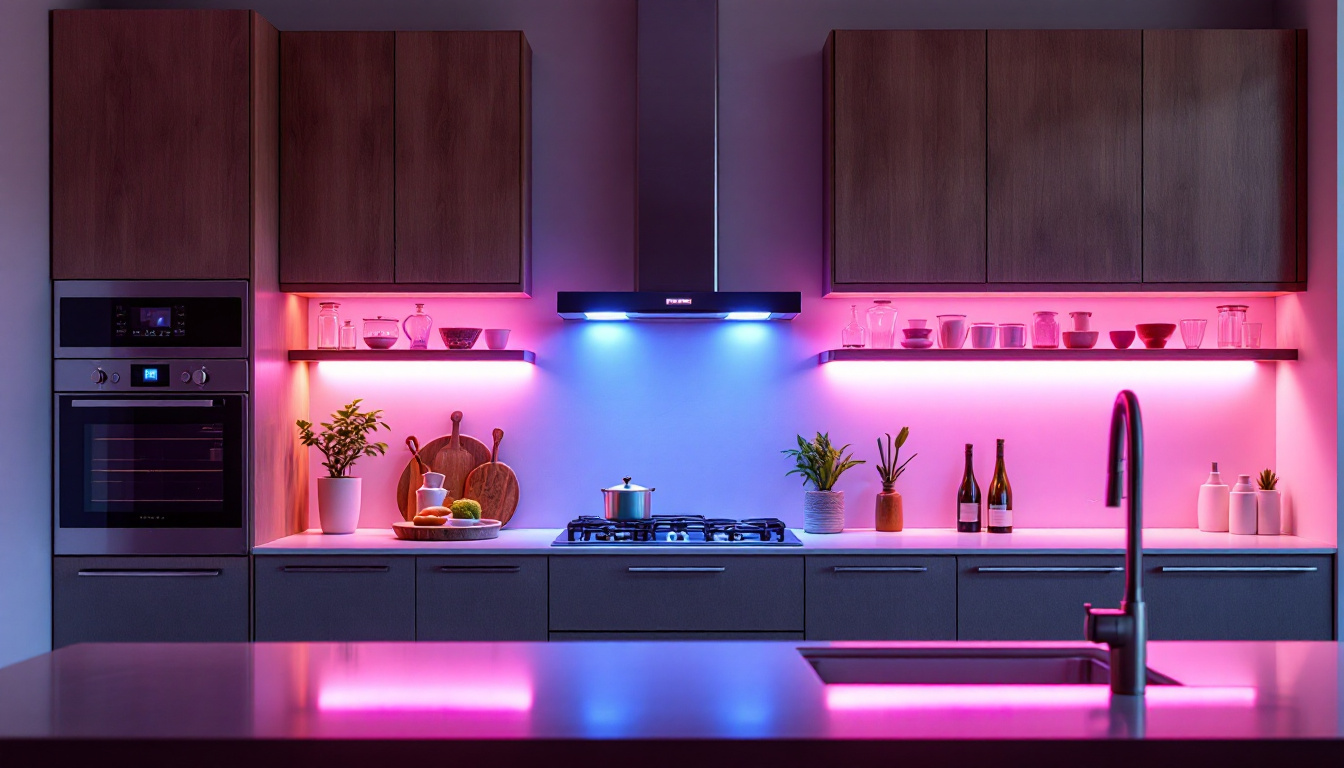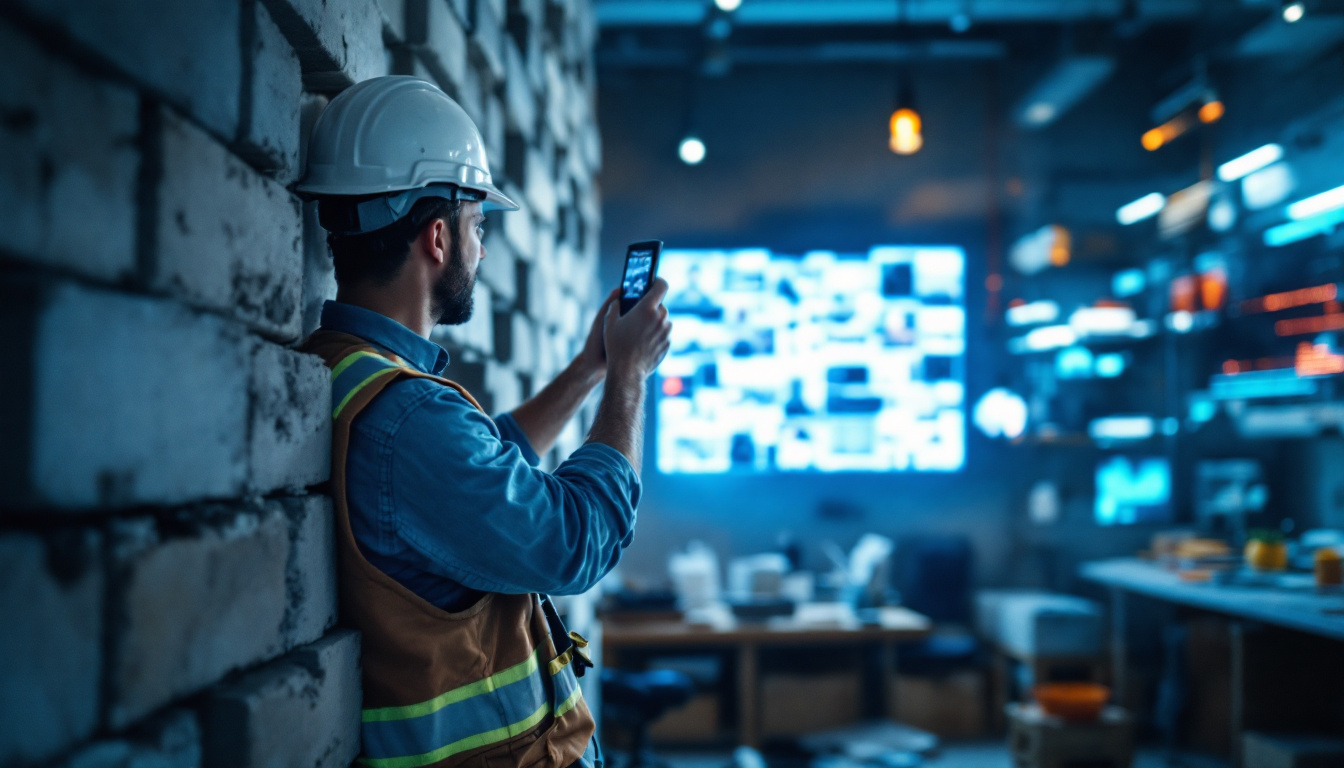In the evolving world of art and technology, LED displays have emerged as a revolutionary medium that transforms how art is created, displayed, and experienced. This article delves into the intricacies of LED displays, exploring their advantages, applications, and the future they hold in the art industry.
Understanding LED Technology
Light Emitting Diodes (LEDs) are semiconductor devices that emit light when an electric current passes through them. This technology has advanced significantly over the years, making LED displays more efficient, vibrant, and versatile than ever before. The evolution of LED technology has not only improved the quality of light produced but has also led to a reduction in energy consumption, making it an eco-friendly choice for both consumers and industries alike.
LEDs are used in a variety of applications, from simple indicator lights to complex video walls. Their ability to produce bright, vivid colors while consuming less power than traditional lighting makes them ideal for artistic displays. Furthermore, the longevity of LEDs—often lasting tens of thousands of hours—means that they are a cost-effective solution over time, reducing the need for frequent replacements and maintenance.
The Basics of LED Displays
LED displays consist of numerous tiny LED bulbs arranged in a grid format. Each bulb can be controlled individually, allowing for a wide range of colors and effects. This capability enables artists to create dynamic visuals that can change in real-time, offering a unique interactive experience for viewers. The precision with which each LED can be manipulated opens up new avenues for creativity, allowing artists to explore intricate designs and animations that were previously difficult to achieve with traditional media.
These displays can be categorized into two main types: direct view and rear projection. Direct view displays are commonly used for outdoor signage and large installations, while rear projection displays are often utilized in galleries and exhibitions where space is limited. Additionally, advancements in technology have led to the development of flexible LED panels, which can be shaped and curved to fit unconventional spaces, further expanding the possibilities for artistic expression.
Advantages of LED Displays in Art
One of the primary advantages of LED displays is their exceptional brightness and clarity. Unlike traditional art mediums, LED technology can produce stunning visuals that stand out in various lighting conditions. This feature is particularly beneficial for outdoor installations, where natural light can often wash out colors. The high contrast ratios achievable with LED displays also mean that intricate details can be appreciated even from a distance, making them ideal for large-scale public art projects.
Moreover, LED displays are highly customizable. Artists can manipulate the visuals in real-time, allowing for a fluid and evolving artistic expression. This interactivity not only engages viewers but also invites them to participate in the artistic process. For instance, some installations incorporate sensors that respond to audience movement or sound, creating a dialogue between the artwork and its observers. This level of engagement transforms passive viewing into an immersive experience, fostering a deeper connection between the art and its audience. Additionally, the integration of software tools allows for the synchronization of visuals with music or other multimedia elements, further enhancing the overall impact of the artwork.
Applications of LED Displays in the Art World
The versatility of LED displays has led to their widespread adoption in various artistic applications. From public art installations to gallery exhibitions, the potential for creativity is limitless.
Public Art Installations
Public art installations have increasingly incorporated LED technology to create immersive experiences. These installations often utilize large-scale LED displays that can be seen from a distance, attracting passersby and inviting them to engage with the artwork.
For instance, cities around the world have embraced LED displays as a means of enhancing public spaces. These installations can transform ordinary locations into vibrant art hubs, showcasing the work of local artists while also providing a platform for community engagement. In places like Times Square in New York City, LED art installations have become iconic, drawing millions of visitors who are captivated by the dynamic visuals that change with the time of day or season. Moreover, these displays can be programmed to respond to environmental factors, such as weather or local events, creating a dialogue between the art and its surroundings.
Gallery Exhibitions
In the realm of gallery exhibitions, LED displays offer artists a new canvas to explore. Many contemporary artists are using LED technology to create interactive installations that challenge traditional notions of art. Viewers can often influence the artwork through their movements or choices, blurring the lines between artist and audience.
Additionally, LED displays can serve as a backdrop for more traditional art forms, such as painting or sculpture. By integrating digital elements, artists can create a multi-dimensional experience that captivates audiences and encourages deeper contemplation of the work. For example, an artist might project animations onto a static sculpture, allowing the piece to evolve and change over time, thus inviting viewers to return and experience it anew. This fusion of digital and physical art not only enhances the aesthetic appeal but also raises questions about the nature of art itself, prompting discussions about authenticity, originality, and the role of technology in creative expression.
The Future of LED Displays in Art
The future of LED displays in the art world looks promising, with ongoing advancements in technology and creative applications. As artists continue to push the boundaries of their mediums, LED displays will likely play a pivotal role in shaping the direction of contemporary art.
Innovations on the Horizon
Emerging technologies such as flexible LED displays and augmented reality (AR) are set to revolutionize the way art is created and experienced. Flexible LED displays can be shaped into various forms, allowing for unprecedented creativity in installation design. Artists can create immersive environments that envelop viewers, offering a truly unique experience.
On the other hand, the integration of AR with LED displays can enhance the viewer’s interaction with the artwork. By using smartphones or AR glasses, audiences can experience additional layers of meaning and context, making the art more engaging and accessible. This fusion of physical and digital art not only broadens the scope of artistic expression but also invites a diverse audience to participate in the artistic dialogue, breaking down barriers that traditional art forms may impose.
Challenges and Considerations
Despite the many advantages of LED displays, there are challenges that artists and curators must navigate. The initial investment in LED technology can be significant, which may deter some artists from exploring this medium. Additionally, the rapid pace of technological advancement means that artists must continually adapt to new tools and techniques.
Moreover, there are environmental considerations associated with LED technology. While LEDs are generally more energy-efficient than traditional lighting, the production and disposal of electronic components can have ecological impacts. Artists and institutions must consider sustainable practices when incorporating LED displays into their work. This includes exploring options for recycling electronic waste, sourcing materials responsibly, and utilizing energy-efficient production methods. As the art community becomes increasingly aware of its environmental footprint, artists are challenged to innovate not just in their creative processes but also in their approach to sustainability, ensuring that the future of art remains vibrant and responsible.
Conclusion
LED displays represent a transformative force in the art world, offering artists new avenues for expression and engagement. As technology continues to evolve, the possibilities for creativity are boundless. By embracing LED technology, artists can not only enhance their work but also redefine the relationship between art and audience.
As we look to the future, it is clear that LED displays will play a crucial role in shaping the landscape of contemporary art. The fusion of technology and creativity promises to inspire new generations of artists and art lovers alike, paving the way for a vibrant and dynamic artistic future.
Illuminate Your Artistic Vision with LumenMatrix
Ready to elevate your art and engage your audience like never before? Discover the innovative world of LumenMatrix LED display solutions. From mesmerizing Indoor LED Walls to dynamic Outdoor Displays and beyond, LumenMatrix is at the forefront of transforming visual experiences. Whether you’re looking to create an interactive public installation or a captivating gallery exhibition, our cutting-edge technology is designed to bring your creative concepts to life with unparalleled brightness, clarity, and flexibility. Don’t let your message fade into the background—Check out LumenMatrix LED Display Solutions today and make a lasting impression with every display.

